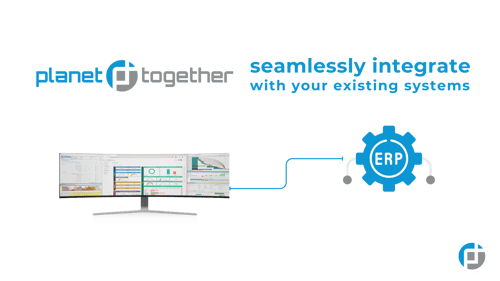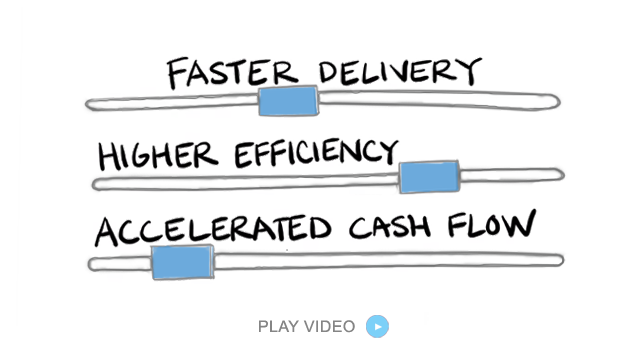Precision Meets Flexibility: Adaptive Manufacturing Powered by PlanetTogether and ERP Integration
The medical manufacturing industry is at a pivotal juncture—rapid technological advances, increasing customization demands, and evolving compliance regulations have created a landscape where static processes no longer suffice. In this environment, adaptive manufacturing has emerged as a powerful response. For Production Planners, adopting adaptive strategies is no longer a luxury—it's a competitive imperative.
Adaptive manufacturing leverages flexibility, data integration, and real-time planning to respond to disruptions, variations in demand, and product complexity. When paired with advanced tools like PlanetTogether APS (Advanced Planning and Scheduling) integrated with ERP platforms such as SAP, Oracle, Microsoft, Kinaxis, or Aveva, planners can orchestrate intelligent workflows that adapt dynamically to real-world conditions—ensuring quality, speed, and compliance.
The Need for Adaptability in Medical Manufacturing
Medical products often require high degrees of customization and must comply with strict regulatory standards. Whether it’s surgical instruments, diagnostic devices, or implantable technologies, every product must meet rigorous performance metrics.
But modern challenges complicate this process:
Frequent demand shifts from healthcare providers
Sudden material shortages or supplier issues
Regulatory updates affecting product specifications
Urgent product iterations based on clinical feedback
Traditional manufacturing lines—configured for volume over versatility—struggle to accommodate such volatility. Here’s where adaptive manufacturing proves transformative.

What Is Adaptive Manufacturing?
Adaptive manufacturing refers to processes that are flexible, modular, and data-driven, enabling manufacturers to change configurations, workflows, and outputs in real time. Instead of relying on fixed production schedules, adaptive systems respond to input from sensors, ERP data, machine conditions, and demand fluctuations.
For Production Planners, this means:
Rapid changeover between product types
More accurate material and resource planning
Real-time adjustments to schedules
Improved traceability and compliance tracking

The Role of PlanetTogether APS in Adaptive Planning
PlanetTogether APS is designed to empower Production Planners with real-time visibility, optimization capabilities, and seamless coordination across operations. Its integration with major ERP systems like SAP, Oracle, Microsoft Dynamics, Kinaxis, or Aveva creates a unified platform for intelligent planning.
Key benefits include:
Real-Time Synchronization with ERP Systems
When integrated with platforms such as SAP or Oracle, PlanetTogether can instantly sync:
Inventory levels
Work orders
Production statuses
Quality control data
This means Production Planners always work with the latest and most accurate data, reducing errors and guesswork.
Scenario Planning and "What-If" Analysis
Using PlanetTogether, planners can simulate alternative production paths:
What if demand surges for a specific product?
What if a supplier is delayed by three days?
What if we repurpose Line 3 for a new SKU?
Such simulations allow for proactive adaptations rather than reactive firefighting.
Constraint-Based Scheduling
Adaptive manufacturing hinges on managing constraints:
Equipment availability
Cleanroom validations
Skilled labor alignment
Material shelf life
PlanetTogether allows planners to optimize scheduling within all of these constraints, enabling faster throughput without compromising compliance.
Customization Without Chaos: Handling Product Variability
One of the most difficult aspects of medical manufacturing is customization. Different hospitals or regions may require slight variations in design or packaging—even within the same product line.
With adaptive manufacturing and integrated APS systems:
Each SKU’s unique requirements are embedded into the schedule
Packaging configurations are automatically adjusted per region
Material availability checks occur in real time to avoid bottlenecks
The result is personalized production with centralized control—a critical advantage in today’s customer-centric environment.
From Batch to Continuous: Enabling Smarter Workflows
Traditionally, medical manufacturing relied heavily on batch processing. But adaptive manufacturing—supported by digital planning platforms—makes continuous manufacturing a viable option.
PlanetTogether’s integration with systems like Aveva (for process control and MES) enables:
Continuous monitoring of production KPIs
Automatic alerts for non-conformance or equipment drift
Tight alignment between scheduling, execution, and compliance
This tight integration helps planners ensure consistent product quality even as they switch between production runs or respond to urgent orders.
Compliance and Traceability: Built-In, Not Bolted-On
In medical manufacturing, compliance is mission-critical. Whether it’s FDA 21 CFR Part 11, ISO 13485, or EU MDR regulations, traceability and documentation must be flawless.
PlanetTogether’s integration with ERP systems ensures:
Digital audit trails for every action
Time-stamped logs of schedule changes
Automatic alignment with validation protocols
Planners can access a full history of who did what, when, and why—streamlining regulatory audits and internal reviews.
Supporting Sustainability and Cost Efficiency
Adaptive manufacturing doesn’t just make operations flexible—it also contributes to sustainability and lean operations:
Fewer material overruns due to optimized planning
Less energy waste from idle machines
Better labor utilization with predictive scheduling
By integrating PlanetTogether with Kinaxis or SAP, companies gain supply chain-wide visibility, allowing for greener decisions and cost controls beyond the production floor.

Integration in Action: PlanetTogether + Microsoft Dynamics in a Medical Device Plant
Consider a mid-sized medical device manufacturer using Microsoft Dynamics 365. By integrating PlanetTogether, they created a feedback loop where:
Demand forecasts from Dynamics auto-update production schedules in PlanetTogether.
Machine performance data flows back to the ERP to inform maintenance planning.
Quality failures trigger immediate rescheduling to avoid defective batches.
This integration enabled the Production Planner to:
Reduce changeover time by 30%
Slash unplanned downtime by 22%
Improve on-time delivery rate from 83% to 96%
Key Takeaways for Production Planners
Adaptability is the new standard. Medical manufacturers must be equipped to pivot instantly—and Production Planners are at the center of this transformation.
Integration is the enabler. PlanetTogether APS, integrated with ERP platforms like SAP, Oracle, Microsoft, Kinaxis, or Aveva, provides the real-time intelligence required to adapt efficiently.
Data is power. The ability to analyze and respond to data across systems empowers planners to stay ahead of disruptions and optimize outcomes.
Compliance and agility can coexist. With integrated planning tools, medical manufacturers don’t have to sacrifice compliance to stay agile—they can achieve both simultaneously.
The future of medical manufacturing is adaptive. With the increasing demand for personalized products, faster turnaround, and uncompromising compliance, Production Planners must lead the charge toward flexible, data-driven processes.
Leveraging PlanetTogether APS, especially when integrated with robust ERP ecosystems like SAP, Oracle, Microsoft Dynamics, Kinaxis, or Aveva, gives planners the tools to orchestrate change rather than react to it.
In a world where the only constant is change, adaptive manufacturing isn’t just a strategy—it’s a imperative requisite. Are you ready to take your manufacturing operations to the next level? Contact us today to learn more about how PlanetTogether can help you achieve your goals and drive success in your industry.
Topics: PlanetTogether Software, Constraint-Based Scheduling, Integrating PlanetTogether, Medical Manufacturing, Scenario Planning and “What-If” Simulations, Real-Time Synchronization with ERP Systems, Enabling Smarter Workflows





















LEAVE A COMMENT